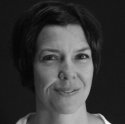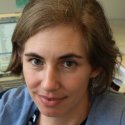EUGENE, Ore. — (April 10, 2012) — What are microbes? What do they do, and where do they live? How do they interact with humans, and how can understanding them improve our health and quality of life?
These questions, along with new insights from studies of these tiny neighbors, will be covered in a three-part lecture series, "Microbes and the Modern World: From the Globe to the Gut," that begins Tuesday, April 17, at the University of Oregon. The talks are open to the public. Admission is free. Each talk begins at 7 p.m. in the Lillis Business Complex, Lillis Hall, Room 182, 955 E. 13th Ave.
The lectures — organized by the Graduate Evolutionary Biology and Ecology Students, a graduate student organization in the Institute of Ecology and Evolution — continue an annual public lecture series designed to address cutting-edge issues related to biology.
Microbes are microscopic, single-celled organisms that occupy every environment on earth. They are in the soil, the oceans, human digestive tracts and even the upper atmosphere. While modern medicine has understood the role some microbes play in disease for well over a century, modern genomic techniques allow for the study of microbes in ways never before possible.
"Our understanding of how microbes interact with us, whether directly with our bodies or indirectly with the environments we build, is going through some exciting changes,” says Brendan Bohannan, the first speaker and associate professor of biology in the UO's Institute of Ecology and Evolution. "Advances in gene-sequencing technologies are allowing us to peer into the microbial world to an extent never before possible."
"Microbes and the Modern World: From the Globe to the Gut " seeks to share the exploration of that frontier with the public, showcasing some of the cutting-edge research happening at the UO and, hopefully, demystifying an invisible but ubiquitous form of life.
The three lectures (April 17, May 8 and May 29) are:
 • Tuesday, April 17: Bohannan, "A scientist in Who-ville: new perspectives on the invisible world of microbes." Bohannan, a 2009 Leopold Leadership Fellow and member of the first class of Google Science Communication Fellows, is a microbial ecologist. He studies microbes in a variety of environments using theoretical tools of ecology developed for plants and animals. His talk will introduce this year's series and explore new frontiers in the study of microbes.
• Tuesday, April 17: Bohannan, "A scientist in Who-ville: new perspectives on the invisible world of microbes." Bohannan, a 2009 Leopold Leadership Fellow and member of the first class of Google Science Communication Fellows, is a microbial ecologist. He studies microbes in a variety of environments using theoretical tools of ecology developed for plants and animals. His talk will introduce this year's series and explore new frontiers in the study of microbes.
 • Tuesday, May 8: Jessica Green, associate professor of biology in UO's Institute of Ecology and Evolution, "The ecology of indoor environments." Green, a 2011 Senior TED fellow, uses empirical, theoretical and computational methods to study the diversity of microbial life across the globe. Her talk will focus on results from the Biology of the Built Environment (BioBE), a UO-based research center featured recently in the journal Science and Scientific American magazine.
• Tuesday, May 8: Jessica Green, associate professor of biology in UO's Institute of Ecology and Evolution, "The ecology of indoor environments." Green, a 2011 Senior TED fellow, uses empirical, theoretical and computational methods to study the diversity of microbial life across the globe. Her talk will focus on results from the Biology of the Built Environment (BioBE), a UO-based research center featured recently in the journal Science and Scientific American magazine.
 • Tuesday, May 29: Karen Guillemin, associate professor of biology in UO's Institute of Molecular Biology, "Molecular dialogues with the microbes inside us.” Guillemin, the 2012 R. E. Dyer lecturer for the National Institutes of Health, studies interactions between microbes and their animal hosts. She will describe interactions between microbes living in the guts of zebra fish and the implications for understanding how humans interact with these microbial guests.
• Tuesday, May 29: Karen Guillemin, associate professor of biology in UO's Institute of Molecular Biology, "Molecular dialogues with the microbes inside us.” Guillemin, the 2012 R. E. Dyer lecturer for the National Institutes of Health, studies interactions between microbes and their animal hosts. She will describe interactions between microbes living in the guts of zebra fish and the implications for understanding how humans interact with these microbial guests.
Support for the lecture series comes from the Associated Students of the University of Oregon, College of Arts and Sciences, Institute of Ecology and Evolution, Department of Biology, Institute of Molecular Biology and the Oregon Humanities Center's Endowment for Public Outreach in the Arts, Sciences and Humanities.
Media Contact: Jim Barlow, director of science and research communications, 541-346-3481, jebarlow@uoregon.edu
Sources: Roo Vandegrift, lead organizer, 540-588-4101, awv@uoregon.edu; Ann Womack, president-in-training, Graduate Evolutionary Biology and Ecology Students, 850-525-0210, annw@uoregon.edu